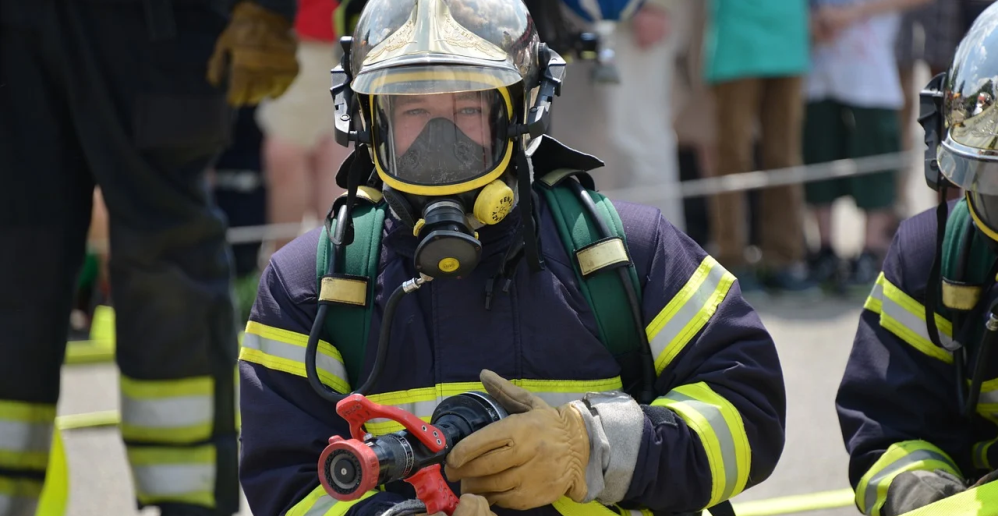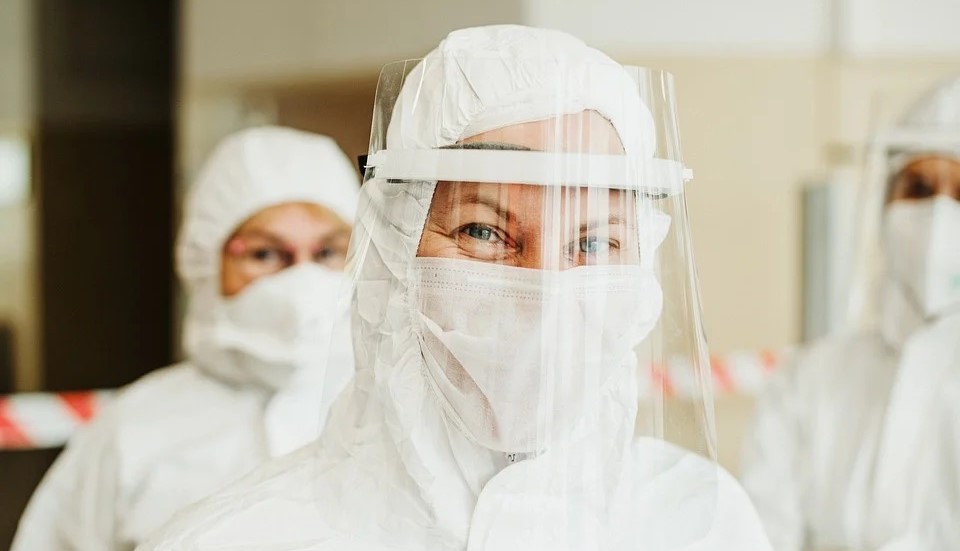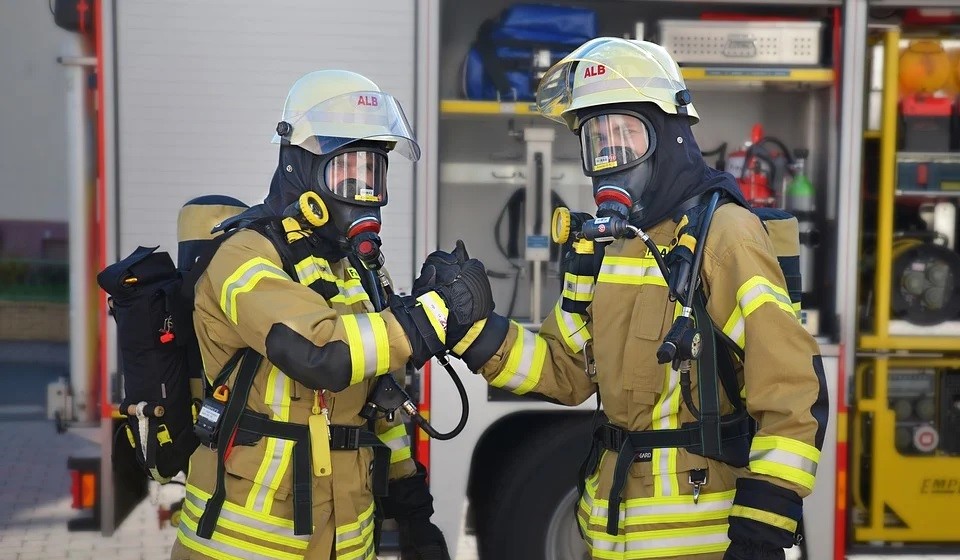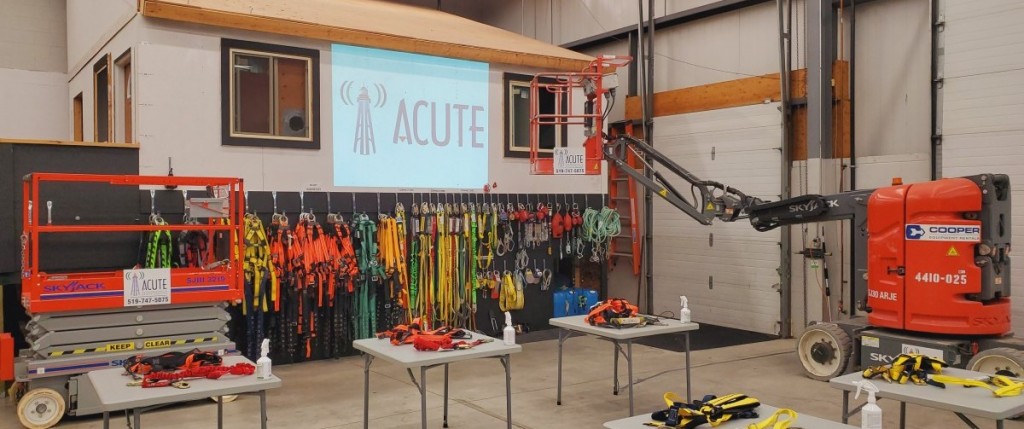Today we are going to take a look at what quantitative fit testing is and why it is important.
Acute has over 100 years of combined experience with in-house or on-site worker environmental and safety training. We want to help you get the training you need to keep your workers safe.
We’ll explain what quantitative fit testing is, how it differs from qualitative fit testing, the government regulations surrounding it, and how you can get the best protection for your workers. So, let’s get going.

Get quantitative fit testing done on your respirators and keep your workers safe
The Difference Between Qualitative and Quantitative Fit Testing
There are two different ways that you can perform fit testing: Qualitative and Quantitative.
Qualitative Fit Testing:
If you get qualitative fit testing done, then you will receive either a pass or a fail result. This type of testing is performed by simply spraying some bitter or sweet aerosols near you while you are wearing your respirator.
If you can taste or smell the spray, or if you experience irritation then your respirator is not fitting you correctly.
Quantitative Fit Testing:
Quantitative fit testing will give you a numerical reading that will let you know how effective the seal is on your respirator. It uses a special measuring instrument called a porta count machine that can accurately measure face-seal leakage.
This is a much more accurate form of testing than the qualitative test and is appropriate for workers who are wearing respirators in situations where there may be an immediate threat to life such as exposure to hazardous chemicals.

A qualitative test is appropriate for workers who face situations where there may be an immediate threat to life
Why ACUTE Does Quantitative Fit Testing
ACUTE understands that as an employer, you want to ensure that your workers’ respirators are providing them with adequate protection as required by law. That’s why we provide the most accurate type of fit testing: Quantitative.
Most Accurate Measurement: As mentioned above, quantitative fit testing will provide you with the most accurate measurement. When it comes to your workers’ safety, you don’t want to be taking any chances, especially when they are working around harmful substances that can be life-threatening.
Meets Regulatory Requirements: As of January 1, 2020, all Ontario workplaces are required under O. Reg. 833 to make sure that any tight-fitting respirator that is to be worn by your workers, needs to be either qualitatively or quantitatively tested for a proper seal. Workers are also required to conduct positive and negative pressure user seal checks before every use of their tight-fitting elastomeric respirator.
Allows an Employer to Provide Adequate Protection: Because quantitative testing is more accurate, it will help you as an employer ensure that your worker’s respirators provide them with adequate protection.
Gives You Proof of Testing: By doing a quantitative fit test, ACUTE can provide you with individual fit testing reports and fit testing cards which will give you proof that your testing has been completed and has been effective.
Respirator & Quantitative Fit Testing Package
ACUTE can provide you with the quantitative fit testing you need to keep your workers safe
Fit Testing FAQ’s
Who Needs to Get Fit Testing Done?
If you wear a tight-fitting respirator for your job, then you need to get it fit tested. A respirator needs to fit you properly in order to keep you safe and give you the best protection possible.
Do You Legally Need to Get Fit Testing Done?
Yes. Fit testing is required by law. According to the government of Ontario regulations, if you wear a tight-fitting respirator for your job, then you need to get either a qualitative or quantitative fit test done on it.
What Types of Respirators Require Fit Testing?
There are many different types of respirators that require fit testing, including:
- Self-Contained Breathing Apparatus (SCBA’s)
- Full-Face Respirators
- Half-Face Respirators
- Filtering Facepieces (N95)

Many different types of respirators require fit testing
Do You Also Need Training Before Your Use a Respirator?
Before you use a respirator on the job, you must receive proper training. This instruction needs to include:
- Understanding the limitation of the respirator
- Learning how to inspect and properly maintain the respirator including “in the case of an air-purifying respirator, end of service life indicators or change out schedules for the cartridge, canister or filter”
- Proper fitting of the respirator
- Cleaning and disinfecting the respirator
- For a complete list of all requirements please click here.

You need to take proper training before you use a respirator on the job – NOTE: This image was taken before COVID-19
How Often Do You Need to Get Fit Testing Done?
You need to have fit testing done:
- Before you use your respirator for the first time
- At least once every 2 years
- If you change your respirator size – for example, if you lose weight and need a smaller respirator, then you will need to be fit tested for a new one.
Are There Any Special Requirements for Fit Testing?
Yes. When you get your fit testing done you need to do the following:
- Remove all facial hair: If you wear a tight-fitting respirator, then you cannot have any facial hair that “comes between the sealing surface of the facepiece and the face or that interferes with the functioning of the respirator.” When you have your fit testing done, you should be clean-shaven just like when you are wearing your respirator for work.
- Wear your prescription eyewear: If you wear prescription eyewear when you are on the job, then you need to wear it for your fit testing too.
- Wear your personal protection equipment (PPE): You should also wear any personal protection equipment during your test that you wear when you are on the job.

You need to remove all facial hair and wear your PPE in preparation for your quantitative fit test
What Are Employers’ Responsibilities Surrounding Wearing Respirators on the Job?
According to the Government of Ontario, O. Reg. 833, if you are unable to protect your workers from exposure to a hazardous biological or chemical agent, then you must provide them with a respirator that is appropriate to the situation they are working in.
Some of the requirements outlined in Regulation 833 include:
- Setting up written procedures and protocols surrounding the selection, maintenance, and use of respirators
- Providing proper training and instructing your workers about the care and use of the respirators before they ever use them
- Ensuring that your respirators are well-maintained and kept in good condition
- Appointing a respiratory protection program administrator

Employers need to provide proper training for their workers who wear respirators
ACUTE Respirator & Quantitative Fit Testing Package
At ACUTE’s Location:
Includes: MSA 200LS Half Face Respirator and 1 pair of Advantage P100 Filter Cartridges
At Your Location:
Includes: MSA 200LS Half Face Respirator and 1 pair of Advantage P100 Filter Cartridges
*There is an additional rental fee for the PortaCount Pro

You can have your quantitative fit testing done at our facility or yours
Get the Best Safety Training From ACUTE
You can trust ACUTE for the best safety training possible. ACUTE’s experienced team members have been serving safety professionals for over 20 years. You can rely on ACUTE for hands-on, physically distanced, practical safety training to keep your employees safe in the workplace. ACUTE is dedicated to workplace safety and understands the importance of course and training provider approval. Why get workplace safety training with ACUTE? Here are just some of the benefits of working with ACUTE:

- Open Door Instructor-Student Partnership – ACUTE’s training services emphasize client participation. Staff foster relationships with clients and serve as a touchstone for advice anytime moving forward.
- Serving Your Team and Industry – With a vast array of clients in the manufacturing, construction, health, academic, and government sectors, ACUTE brings the best safety practices from across the spectrum to your workplace.
- 100 Years Combined Experience – ACUTE provides comprehensive health and safety training, on-site safety services, and consulting services. With over 100 years of combined experience, our company staff offer more than theoretical or abstract ideas. ACUTE offers solutions.
- Track Record of Success – ACUTE is rated 4.9/5 stars on Google reviews, demonstrating a commitment to our clients, quality, and passion for training.
Check out our course calendar for times and dates of our courses.
“I work at the University of Guelph as an arborist. Ron Campbell provided a small socially distanced group and myself with working at heights training. Ron has a wealth of knowledge and kept everyone engaged with many “real life” examples of working at heights scenarios and facts. We have also received elevated work platform training with Patrick from Acute training. Patrick is also a very friendly, knowledgeable and engaging professional trainer. I truly believe that the best trainers are those with practical experience and the trainers at Acute have that locked down.”


